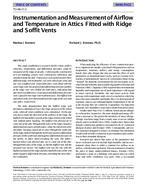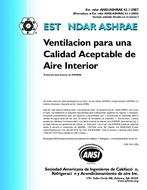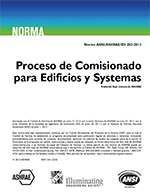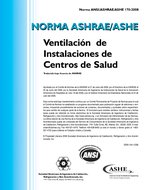Description
This study established a research facility where airflow velocities, temperature, and differential pressures could be measured at the ridge of an attic. Following the construction of a test building, sensors were constructed, calibrated, and installed inside the attic. Paired tests were performed for three different ridge vent treatments; two were rolled type vents and one was a baffled vent. When both attics were fitted with the same ridge vent, the airspeed and differential pressure profiles at the ridge were very similar for both attics, indicating that any observed differences in airspeed and differential pressure were caused by the ridge vent treatment used. The baffled vent and rolled vents were then installed on the ridge of the west and east attics, respectively.
The data demonstrated that the baffled ridge vent provided a minimum of twice the ridge airspeed of the rolled vents, when all wind conditions were considered. On the day selected to study the direction of the airflows at the ridge, the baffled vent had airflow speeds at the ridge similar to the rolled vent without fabric backing. The baffled vent allowed air to come out of the attic through both sides of the ridge (negative differential pressures on both sides), while the rolled vent without fabric backing caused air to enter through the south side of the ridge and exit through the north side (positive differential pressure on the south side and negative differential pressure on the north), in effect short-circuiting the vent. The fabric-backed rolled vent allowed attic air to come out of the attic through both sides of the ridge, as did the baffled vent, but the airspeed was slower. The baffled vent was the one with the highest airspeed at the ridge and also had both sides of the vent under negative differential pressure, providing the most effective ventilation.
Units: Dual
Citation: Symposium, ASHRAE Transactions, 1998, Vol. 104, Part 2, Toronto, ON
Product Details
- Published:
- 1998
- Number of Pages:
- 9
- File Size:
- 1 file , 440 KB
- Product Code(s):
- D-7747




